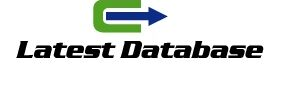Core Web Vitals are field data defined by Google that provide information about a website’s performance. For example, user-friendliness is assessed in terms of loading time for both desktop and mobile devices. Since their official announcement and introduction by Google in 2021, these Core Web Vitals have also been a ranking factor. By measuring various metrics such as load time (LCP), visual stability (CLS), and others, a performance score can be calculated. If the score is between 90 and 100, the website has passed this test. Google recommends all website operators to achieve the best possible Core Web Vitals scores, not only to achieve better rankings in organic search results, but also to provide users with a user-friendly website.
Especially due to the increasing number of mobile internet users, fast loading times and good performance will become increasingly important in the future. Websites with particularly slow loading times risk not only a high bounce rate but also a lower ranking in organic search results. However, we will discuss the topic of Core Web Vitals as a ranking factor in more detail later in this article.
Largest Contentful Paint (LCP)
This value is a measure of the loading time of the largest element (e.g., an image, video, or text section) on a page. Since the largest element on dataset a website typically takes the longest to load, the LCP metric provides important information about how quickly the main content of a website becomes visible to the user. LCP is therefore a value that accurately reflects the perceived loading time of a website from the user’s perspective.
The measured values are given in seconds and the measurement begins when a URL is called.
- Good : less than or equal to 2.5 seconds
- Room for improvement : between 2.6 and 4.0 seconds
- Bad : more than 4.0 seconds
Cumulative Layout Shift (CLS)
CLS stands for Cumulative Layout Shift and, as the name suggests, returns a metric for layout shifts. This measures how often a website experiences can be combined in your azure subscription unexpected layout shifts during loading. The lower this metric, the more user-friendly the website is, as unexpected layout changes can negatively impact the user experience. If a user clicks on the wrong button or link due to an unexpected layout shift, this is not only annoying, but in some cases can also cause unintended damage.
The measured values are given between 0 and a positive number.
- Good : less than or equal to 0.1
- Room for improvement : between 0.11 and 0.25
- Bad : more than 0.25
Interaction to Next Paint (INP)
INP is a measure of a website’s responsiveness. It measures the time (latency) over the entire duration of a user’s visit. This allows the latency australia database directory of all interactions throughout the entire visit to the website to be captured. A website has good responsiveness and thus a low INP if it can respond quickly to interactions. A particularly high response time can negatively impact the user experience.
The measured values are given in seconds and are measured specifically after the interaction (e.g. clicking on a button).

